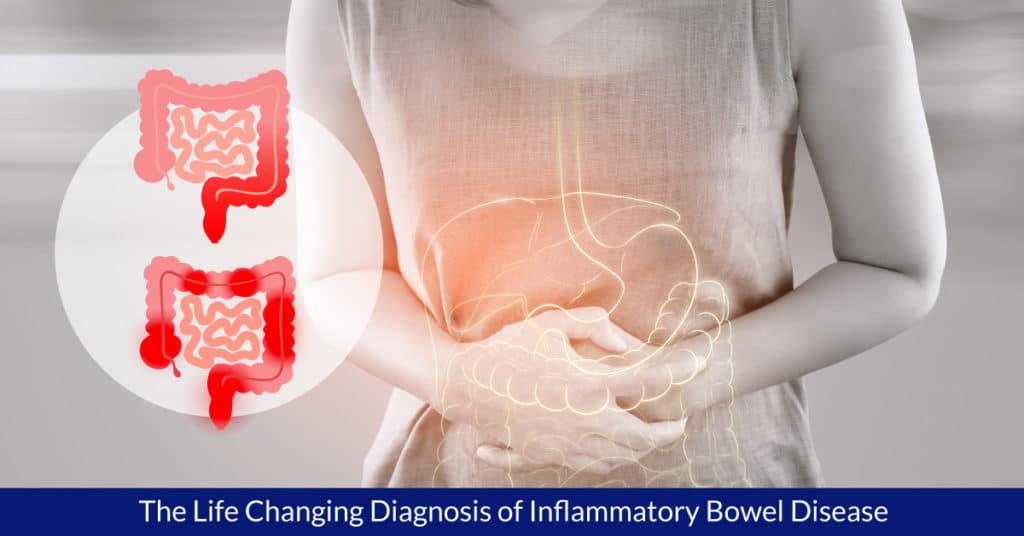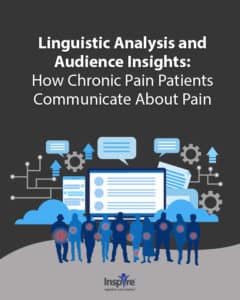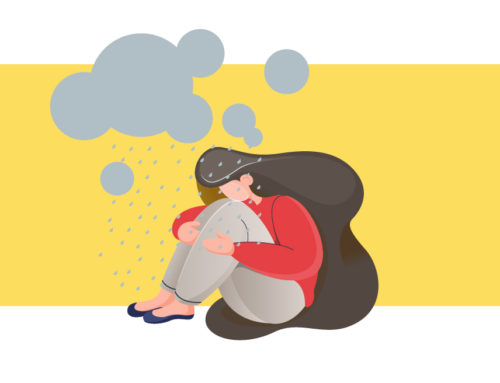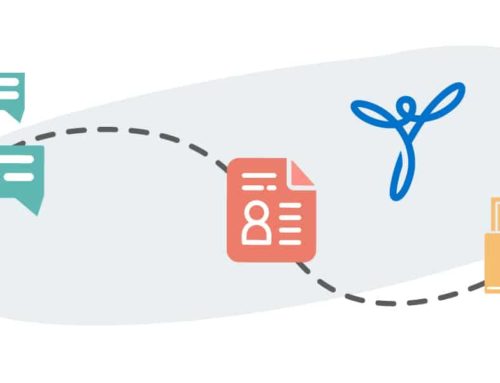The Life Changing Diagnosis of Inflammatory Bowel Disease

By Kathleen Hoffman, PhD MSPH
I’ve had UC for 4 years also. Diagnosed with a colonoscopy after 5 months of diarrhea, losing 1/3rd of my otherwise normal weight and enough blood to require a 2-pint transfusion.
Pausing a conversation to use the restroom is biologically necessary, but can be socially awkward. People living with inflammatory bowel diseases (IBD) find themselves saying “Excuse me” many more times a day than they would like and experience pain with symptoms nobody enjoys talking about. The two most common inflammatory bowel diseases include Crohn’s disease and ulcerative colitis (UC), both of which are chronic.
I was diagnosed with Crohn’s Disease in___. I didn’t have a clue what Crohn’s disease was when my Dr.’s came in and told me that’s what I had been diagnosed with. I was scared due to the tremendous amount [of] weight I lost. I thought I was going to die… After not being able to eat. It was very hard trying to adapt back to my normal. I fell in a form of depression because I just couldn’t do what I was use to doing. My life had changed right before my eyes. I. Being fatigued and hurting daily just didn’t agree with what I was trying to do.
The cause of IBD is unknown. For Crohn’s disease, inflammation can occur throughout the gastrointestinal system, from the mouth to the anus. Inflammation is not continuous; there can be inflamed areas next to healthy areas. In addition, in Crohn’s the inflammation can occur in all the layers of the bowel wall. Ulcerative colitis, on the other hand, occurs only in the inner walls of the colon. Unlike Crohn’s disease, in ulcerative colitis the inflamed areas of the colon are continuous. Both forms of IBD can begin at an early age and negatively impact quality of life.
I had a colonoscopy yesterday that once again showed no return of crohns which is good. I’d never want to be that sick again. …But now I don’t understand why I can’t hardly eat w/o rushing to the restroom and having intense cramps. And the fatigue is never ending. Now I feel like my husband and mother in law think I’m lying.
There are treatments, but the goal is achieving the elusive remission. Fortunately, new treatments have become available for more people. Humira, which has been available for adults with ulcerative colitis since 2012 was just approved in February for children age 5 and older with ulcerative colitis based on the results of the ENVISION 1 study.
At the end of May, the FDA approved ozanimod (marketed as Zeposia®) to treat ulcerative colitis in adults with moderate to severe disease. Ozanimod acts as a sphingosine 1-phosphate (S1P) receptor modulator. S1P signals the recruitment of lymphocytes which are thought to be overactive in both UC and Crohn’s. Ozanimod binds to S1P, slowing the movement of lymphocytes into the intestines and reducing inflammation.1,2,3
The hope is that ozanimod could also induce remission and promote healing in patients with Crohn’s disease. A Phase III clinical trial is underway and expected to be completed in 2026. This open-label study is currently recruiting.4,5
I am having a hard time with my Crohn’s disease, I want to know if anyone else is having the same. I am having symptoms like, cant move my arms from elbow down because the muscles hurt so bad, or legs hurting so bad you can’t walk on them?
The rate of both diseases in the US appears to be increasing. In 1999, the CDC estimated the population with IBD to be 2 million, or about 0.9% of the population. By 2015, the number had increased to 3 million, which is about 1.3% of the population. These numbers do not include children, who also have IBD.
My UC started [as a teenager] and I had surgery [as an adult]. Fatigue and joint and muscle pain go hand in hand with the disease as well as migraines. Waiting for a medication to take effect really is difficult.
Over 32,400 and almost 25,000 patients and caregivers come to Inspire for support for Crohn’s disease and UC respectively. These numbers reflect not just disease prevalence but also the significant need to share symptoms, treatments, needs, feelings and experiences in the company of peers, with the dignity of being believed and understood.
Inspire offers a trusted community to patients and caregivers. Our goal with this blog, this website and our content is to provide the life science industry access to the true, authentic patient voice. In so doing, we support faithful operationalization of patient-centricity. Take a look at our case studies, eBooks and news outlet coverage.
References
1 https://www.scripps.edu/news-and-events/press-room/2021/202105-ozanimod-ulcerativecolitis.html
2 Aoki M. et al. Sphingosine-1-Phosphate Signaling in Immune Cells and Inflammation: Roles and Therapeutic Potential (2016). PMCID:PMC4761394 DOI:10.1155/2016/8606878
3https://www.crohnsandcolitis.com/crohns
4https://clinicaltrials.gov/ct2/show/NCT03467958
5 https://www.cdc.gov/ibd/data-statistics.htm#3






